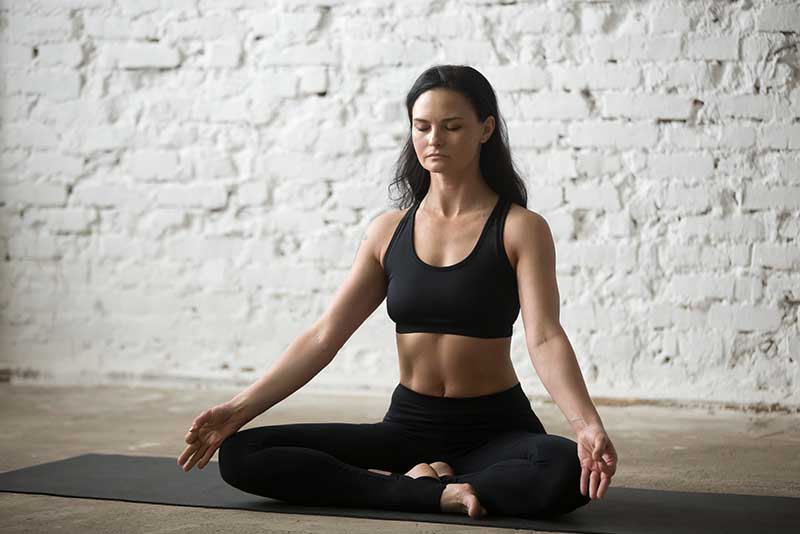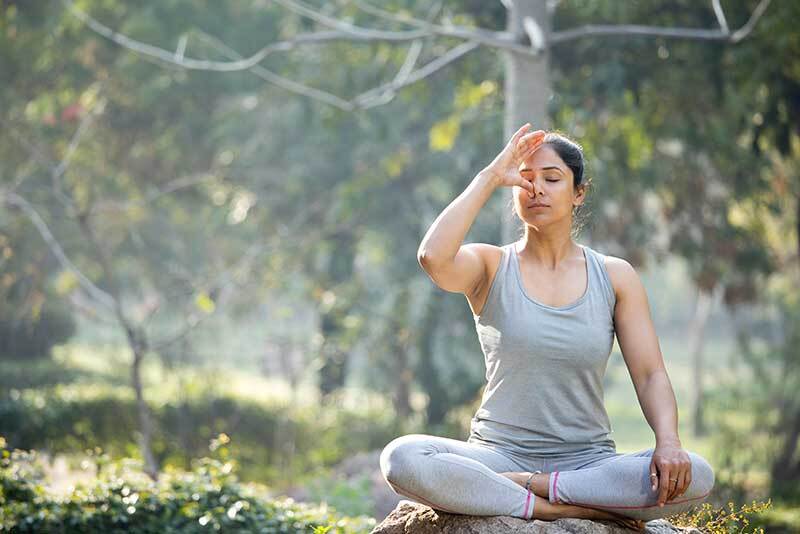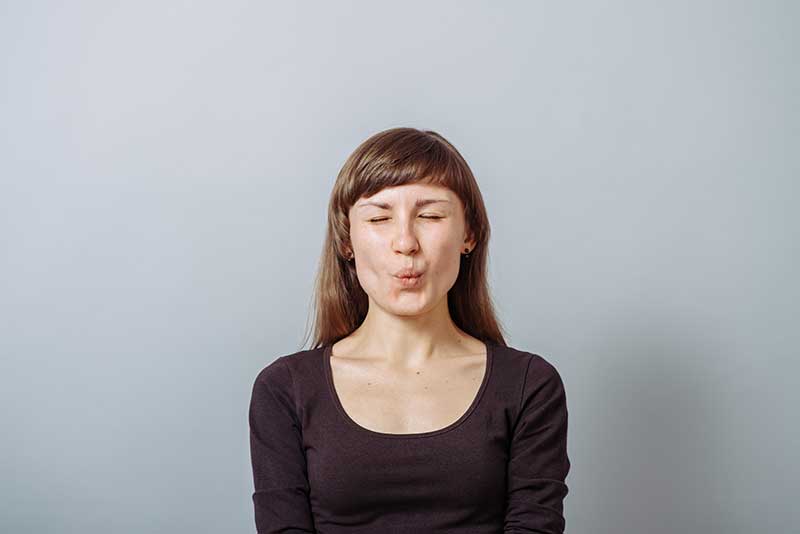Ah, diabetes—the condition that makes your pancreas go, “Hey, let’s have some fun with insulin production!” But fear not, my friend, because along with medical treatments and lifestyle adjustments, there’s a little something called pranayama that may add a breath of fresh air to your diabetes management routine. Pranayama, the art of controlled breathing in yoga, might just help you strike a balance in your blood sugar dance. So, let’s explore the 5 best pranayama for diabetes control.
Best Pranayama For Diabetes
Let’s get started with simple breathing exercises for diabetes that are easy, beneficial and super effective for your overall well-being.
1. Kapalbhati Pranayama (Skull Shining Breath):

Kapalbhati pranayama, one of the best pranayama for diabetes, may indirectly assist in diabetes management by enhancing digestion, increasing oxygenation to the pancreas, and reducing stress levels. By stimulating the abdominal muscles and massaging the internal organs, it can potentially improve digestion and support optimal pancreatic function. Additionally, the practice aids in better oxygen delivery to the body, including the pancreas, which plays a role in insulin production and glucose metabolism. Furthermore, by promoting relaxation and reducing stress, Kapalbhati pranayama can contribute to a more balanced blood sugar control.
How to do :
- Sit in a comfortable position with your back straight.
- Take a deep breath in, and as you exhale forcefully, pull your navel back toward your spine, creating a quick and forceful burst of breath.
- Allow the inhalation to happen passively and naturally.
- Start with a few rounds and gradually increase the speed while maintaining a steady rhythm.
2. Nadi Shodhana Pranayama (Alternate Nostril Breathing):

Nadi Shodhana Pranayama, or Alternate Nostril Breathing, is a great pranayama for diabetes control as it helps by reducing stress levels through its calming effect on the mind and body. By promoting a balance in the autonomic nervous system, it may positively influence hormonal balance and metabolic processes, potentially impacting blood glucose regulation. Additionally, this technique enhances respiratory function, improving oxygen supply to the pancreatic cells responsible for insulin production and glucose regulation. While it is essential to consult with healthcare professionals for personalised guidance, incorporating Nadi Shodhana Pranayama into a diabetes management routine can be a beneficial complement to overall care.
How to do :
- Sit in a comfortable position with your spine erect.
- Close your eyes and place your left hand on your left knee, using the chin mudra (thumb and index finger touching) if desired.
- Gently close your right nostril with your right thumb and inhale deeply through your left nostril.
- Close your left nostril with your ring finger, release your right nostril, and exhale through the right nostril.
- Keeping the left nostril closed, inhale through the right nostril, then close it with the right thumb.
- Release the left nostril and exhale through the left.
- This completes one round. Continue for several rounds, alternating the breath between the nostrils.
3. Bhastrika Pranayama (Bellows Breath):
Bhastrika Pranayama, also known as Bellows Breath, is a powerful breathing technique that involves forceful and rapid inhalations and exhalations. The vigorous breathing stimulates the abdominal organs, including the pancreas, potentially improving digestion and enhancing overall pancreatic function. Bhastrika pranayama for diabetes also increases oxygen intake and improves blood circulation, which may support the optimal functioning of various organs, including those involved in glucose metabolism. Additionally, Bhastrika Pranayama for diabetes control can help reduce stress levels through its energising and invigorating effect, as stress can impact blood sugar control. Incorporating Bhastrika Pranayama into a comprehensive diabetes management routine, alongside medical advice and lifestyle modifications, may offer potential benefits for individuals with diabetes.
How To Do :
- Sit in a comfortable position with your back straight.
- Take a deep breath in through your nose, filling your lungs completely.
- Exhale forcefully through your nose, expelling the air with a quick and strong breath.
- Continue this rhythmic breathing pattern, inhaling and exhaling forcefully.
4. Sheetali Pranayama (Cooling Breath):

Shitali Pranayama, also known as Cooling Breath, can be a complementary breathing exercise for diabetes. It is known to have a calming effect on the nervous system, potentially reducing stress and promoting relaxation. By alleviating stress, Shitali Pranayama indirectly supports diabetes management, as stress can impact blood sugar levels. Additionally, the cooling sensation created by this pranayama technique may help in balancing body temperature, which can be beneficial for individuals with diabetes who may experience temperature-related discomfort or fluctuations.
How to do:
- Sit in a comfortable position with your spine erect.
- Roll your tongue into a tube-like shape or purse your lips together.
- Inhale slowly through the rolled tongue or pursed lips, feeling the coolness of the breath.
- After a full inhalation, close your mouth and exhale slowly through your nose.
5. Brahmari Pranayama (Bee Breath):

Bhramari Pranayama can be used as a pranayama for diabetes cure. It is known to promote relaxation, reduce stress, and calm the mind. By reducing stress levels, this practice indirectly supports diabetes management, as stress can impact blood sugar control. Additionally, the vibrations created by the humming sound may have a positive impact on the endocrine system, potentially influencing insulin secretion and overall hormonal balance.
How to do:
- Sit in a comfortable position with your eyes closed.
- Place your index fingers gently on your ears to block out external sounds.
- Take a deep breath in through your nose.
- Exhale slowly and make a humming sound like a bee, keeping your mouth closed and your tongue resting gently on the floor of your mouth.
- Repeat this process for several rounds, focusing on the sensation and vibrations created by the humming sound.
Conclusion
In the blog we discussed breathing exercise for diabetes and the numerous benefits of pranayama for diabetes. Although Pranayama alone can’t cure diabetes, it can definitely facilitate insulin regulation and keep the patient in a conducive state for getting maximum output from other treatments. Best thing is you don’t need any equipment or money for trying these practices. Isn’t it best to give it a try?
Resources:
- https://www.njppp.com/fulltext/28-1515162447.pdf
- https://www.ncbi.nlm.nih.gov/pmc/articles/PMC6145966/

Mr. Vijay Kumar Pandey is an eminent Yoga teacher with 15 years of experience. He excelled himself in Iyengar Yoga under the guidance of revered master BKS Iyengar Read More


